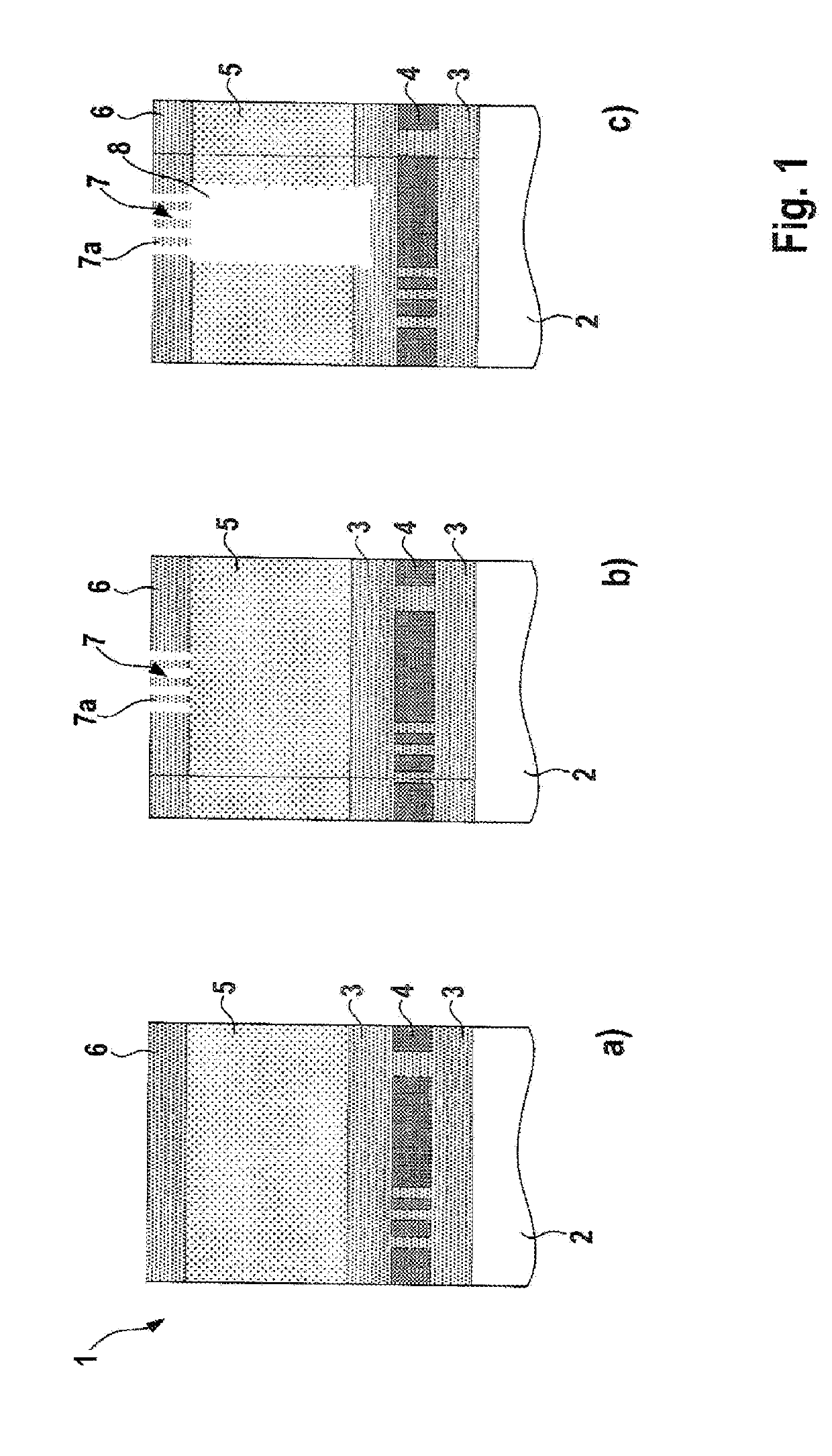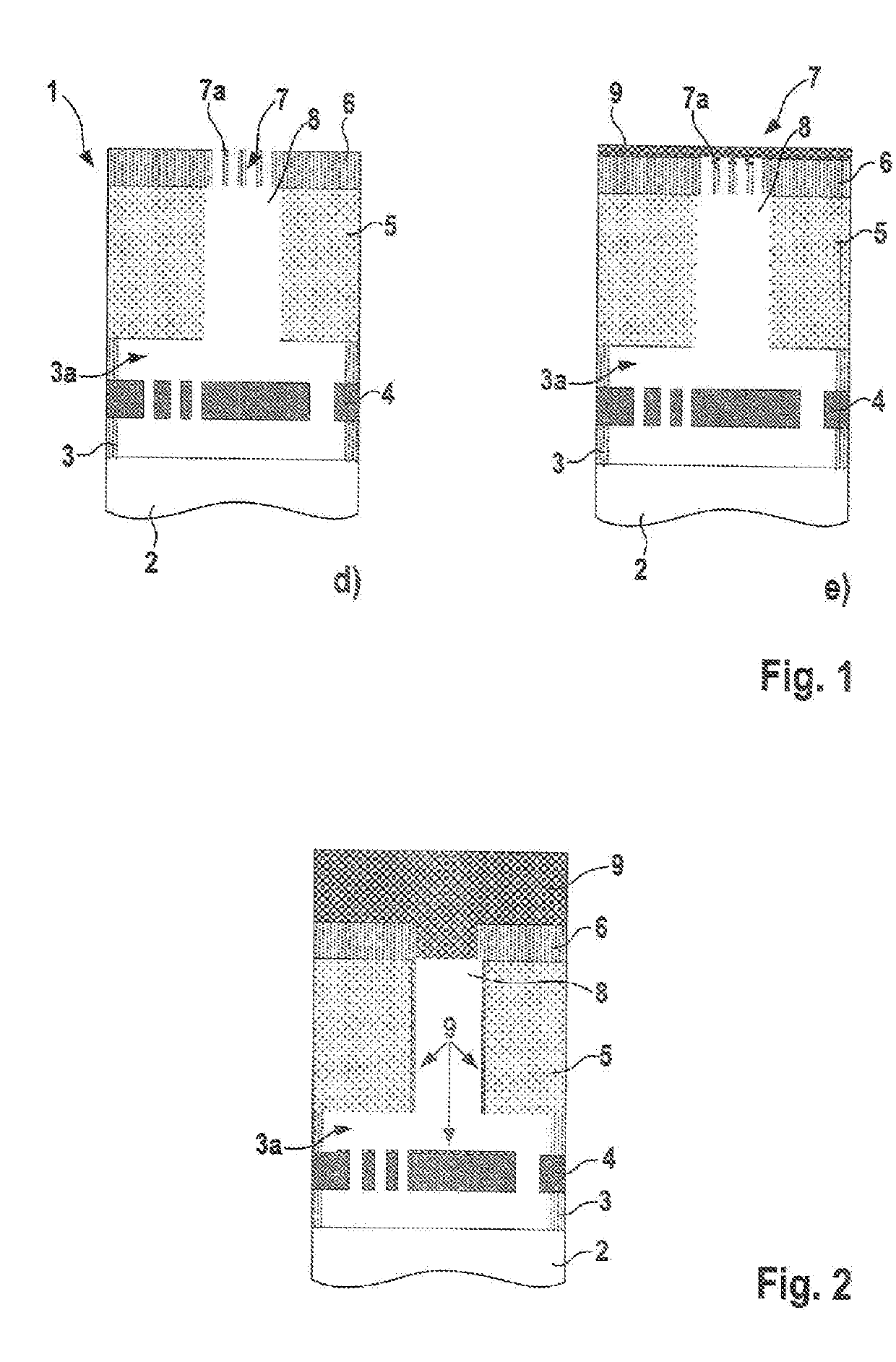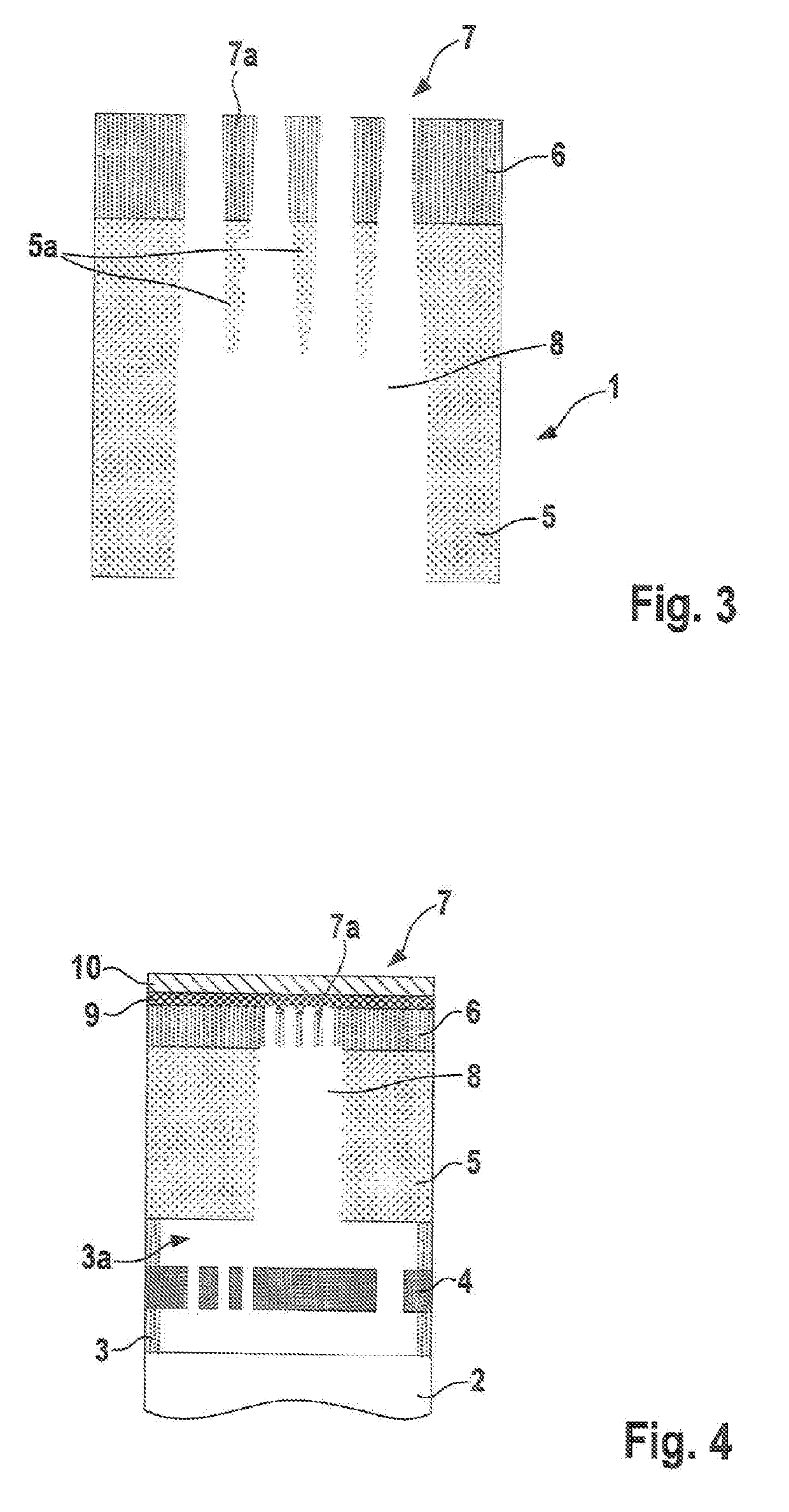Method for Producing a Micromechanical Element
a micromechanical element and micro-mechanical technology, applied in the direction of fluid speed measurement, instrumentation, and mechanical device details, can solve the problems of material removal in the functional layer, and achieve the effects of increasing the stability of the micromechanical structure, reducing the size of the cavity, and reliably removing the closure cap material
- Summary
- Abstract
- Description
- Claims
- Application Information
AI Technical Summary
Benefits of technology
Problems solved by technology
Method used
Image
Examples
Embodiment Construction
[0034]FIGS. 1a-e show steps of a method in accordance with one embodiment of the present disclosure.
[0035]In detail, FIG. 1a shows a micromechanical structure 1 comprising a plurality of layers one above another. The bottommost layer 2 is formed by a substrate. A sacrificial layer 3, for example produced from silicon oxide, is arranged on said substrate layer 2, a functional layer 4 for a microelectromechanical sensor being embedded into said sacrificial layer. A closure cap layer 5, for example in the form of a cap, is arranged above the sacrificial layer 3. Grid material 6 has in turn been applied or deposited on said closure cap layer 5.
[0036]In order to produce the micromechanical layer structure 1, for example the functional layer 4 is produced on the sacrificial layer 3 and then material of the sacrificial layer 3 is once again applied on the functional layer 4 until the part of the functional layer 4 which forms the micromechanical sensor is completely enclosed by the sacrifi...
PUM
| Property | Measurement | Unit |
|---|---|---|
| micromechanical structure | aaaaa | aaaaa |
| internal pressure | aaaaa | aaaaa |
| electrical | aaaaa | aaaaa |
Abstract
Description
Claims
Application Information
 Login to View More
Login to View More - R&D
- Intellectual Property
- Life Sciences
- Materials
- Tech Scout
- Unparalleled Data Quality
- Higher Quality Content
- 60% Fewer Hallucinations
Browse by: Latest US Patents, China's latest patents, Technical Efficacy Thesaurus, Application Domain, Technology Topic, Popular Technical Reports.
© 2025 PatSnap. All rights reserved.Legal|Privacy policy|Modern Slavery Act Transparency Statement|Sitemap|About US| Contact US: help@patsnap.com



